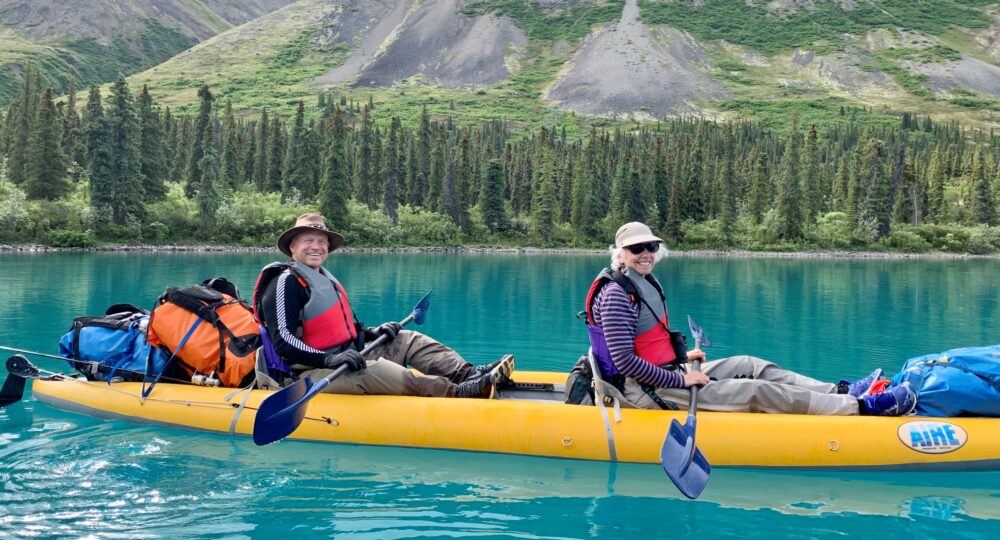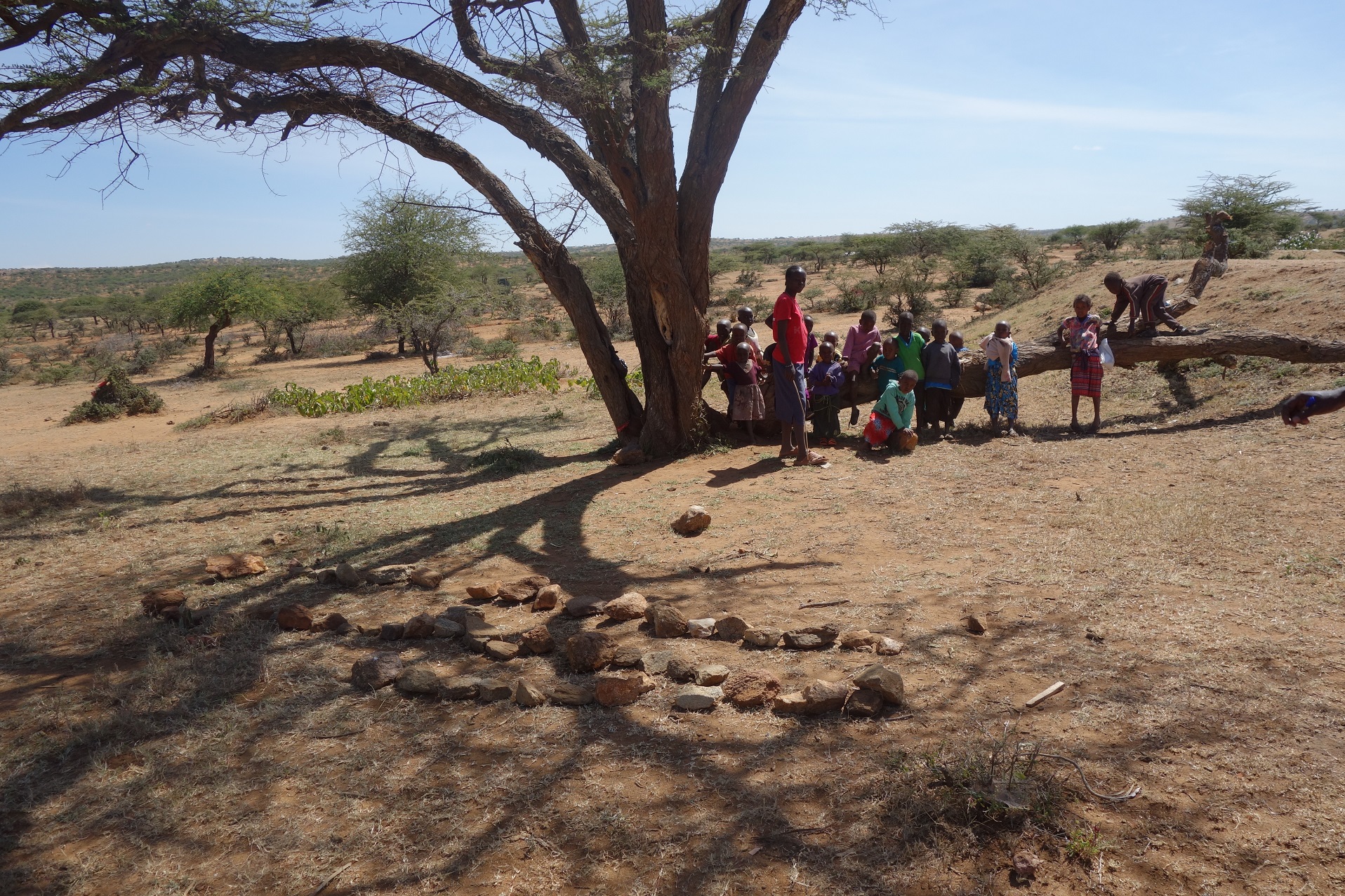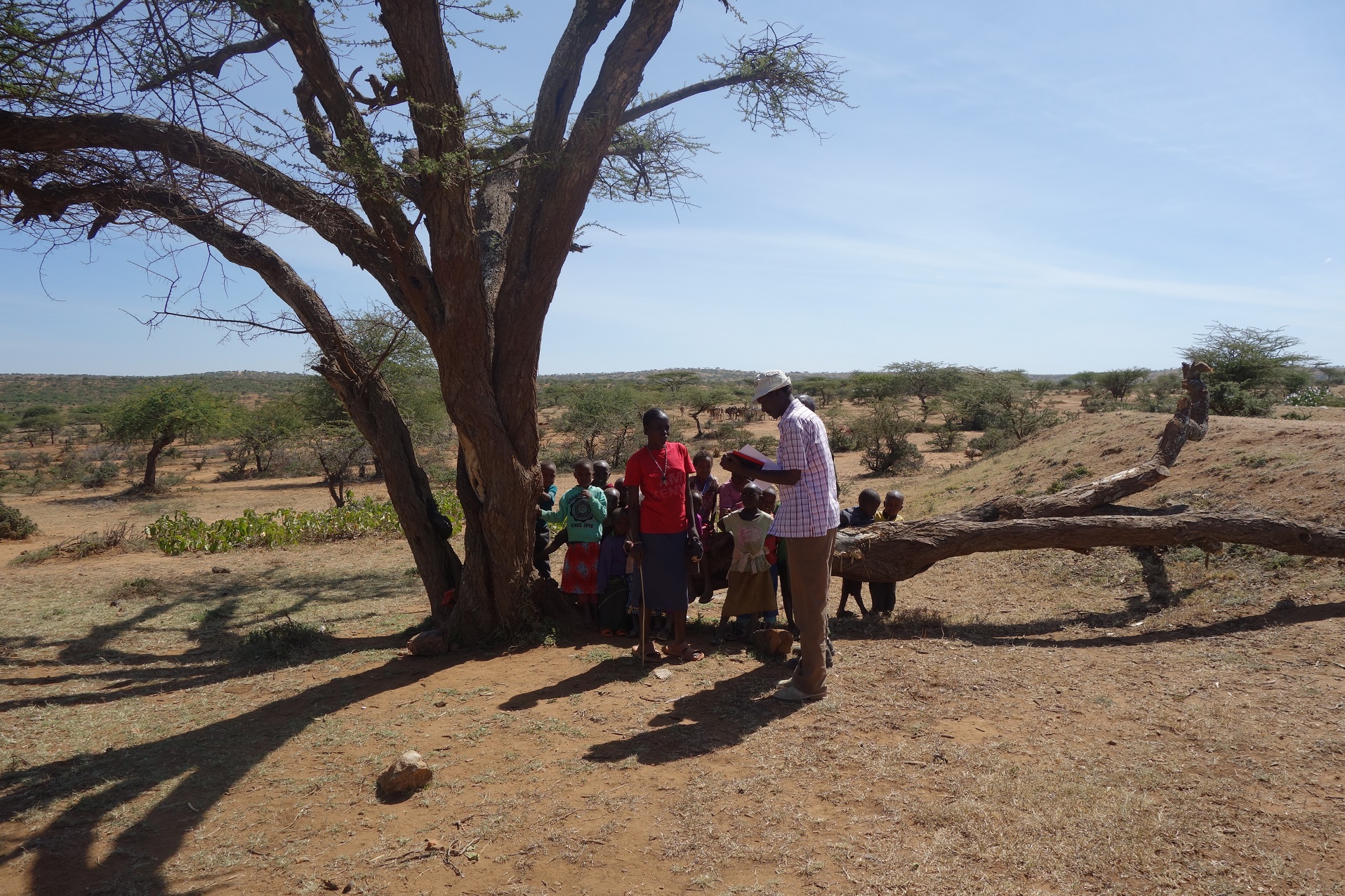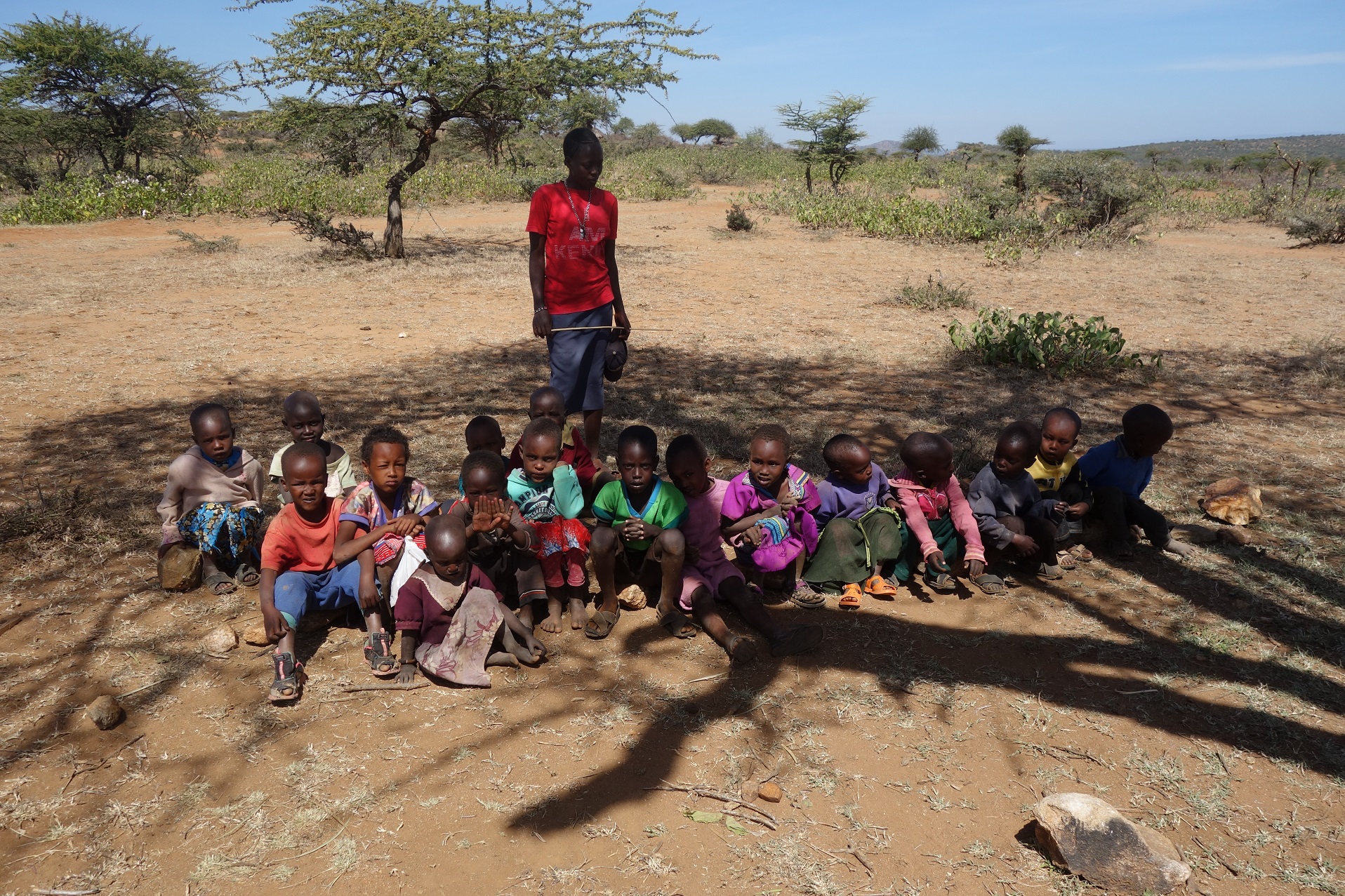The journey to visit all NRT schools has begun. Before recommending an education program for the NRT it is necessary to get into the field and see what is actually in place. So, I designed a school assessment survey, hired a consultant to help, and started visiting every school, ECDE (pre-school), primary, and secondary in the conservancies. Paul Leringato, the consultant, and I are gathering information about the students, teachers, existing infrastructure, and NGO’s which are currently helping the schools.
Ndonyo Napi pre-school, three rows of rocks under an acacia tree, is one of the nineteen sites that we visited in Naibunga Conservancy. It is a feeder school for Kimanjo Primary and has an enrollment of 18 boys and 18 girls aged 3-4 years old. The maximum distance a child walks to school is 1.5 kilometers though most live within ½ kilometer of the school. We visited Ndonyo Napi on market day so many of the students were kept home while their parents went to the market and the kids watched the family goats.
Pamela Yangere is the only teacher. She is 18 or 19 years old and recently completed Form 4 (the last year of secondary school). She lives nearby in a stick, mud and thatch Manyatta with her parents and earns a salary of, she hopes, Ksh 5,000 per month ($60 USD) for the nine months that school is in session. The Ol Lentille Trust, a local resort, donates Ksh 2,000 and she gets the rest when and if the local parents can afford to pay “school fees”.
This school is fortunate in several ways. The Ol Lentille trust has installed a pit toilet, helps pay the teacher and provides some school supplies. Another group, the NHIF (I don’t know what this stands for) is going to build a classroom fairly soon. And the teacher, while having no teacher training, has more schooling than most ECDE teachers in similar schools. Class 8 (complete primary school) plus an ECDE Certificate is the legal minimum requirement but many ECDE teachers in outlying schools have not even completed Class 8.
A common reaction to a school such as this is, “Those poor kids don’t even have a classroom.” But, actually, learning under the Acacia is pretty nice. You are out of the direct sun, the air temperature is pleasant and there is usually a nice breeze. I considered this school to be lucky that they have a teacher with as much as a Form 4 education who happens to live in the community and is willing to teach. Many communities are not so fortunate. You can learn under the Acacia but you can’t have a school without a teacher.




If the opportunity presents itself, I would love to visit a school with you.
It is beautiful. sounds enchanting. however what do children ages 3-4 need to “learn” Here is US it is colors abcs how to count etc, I suppose it is the same only adapted to their life style and cultures. It seems that stories and pictures of other peoples and places and what other children do and how they live would be good. also music, art, what a challenge. Do they need supplies, chalk and errase boards. stuff like that.